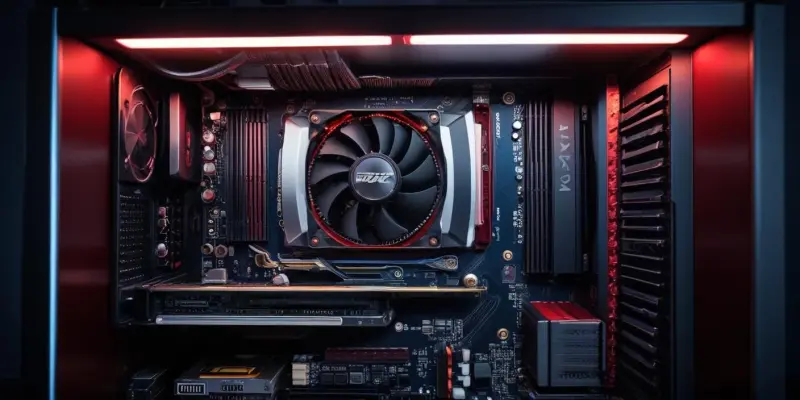In the constantly evolving world of gaming technology, Nvidia has once again pushed the boundaries with its latest Zorah demo, unveiled at CES. This remarkable demonstration highlights the advanced capabilities of the RTX 50-series graphics cards, promising a future where ultra-realistic gaming experiences are within reach. With groundbreaking advancements like enhanced ray tracing, DLSS 4 upscaling, frame generation, and neural shaders, the Zorah demo sets the stage for a new era in gaming, blending near-photorealistic visuals with unprecedented computational power.
Cutting-Edge Technology and Requirements
The Zorah demo is a testament to the power and sophistication of Nvidia’s new RTX 50-series graphics cards. Users eager to experience this demo firsthand need to equip themselves with some of the most high-end hardware available. Specifically, a high-end Nvidia graphics card, more than 100GB of storage space, and a powerful PC are required to run the demo smoothly. This demo leverages a variety of RTX features, such as texture filtering, neural materials, texture compression, and character rendering, significantly enhancing the visual depth and realism of the gaming environment.
Moreover, the demo employs mega geometry, neural faces, and advanced hair rendering techniques to push the envelope of graphical fidelity. Nvidia’s RT cores are particularly prominent in their application for ray tracing, highlighting the company’s leadership in this domain over competitors like AMD’s RX 9000 series. The precision and detail achieved through these technologies offer a glimpse into what future gaming experiences could look like, showcasing stunning visuals that blur the line between virtual and reality.
Impact on Future Gaming and Hardware
The Zorah demo does more than just display technical prowess; it signifies the potential trajectory of gaming technology in the coming years. The majority of today’s gamers are utilizing hardware like the RTX 3060 or equivalent, indicating that while these advancements are groundbreaking, they may not become mainstream for some time. As technology progresses and hardware becomes more accessible, the features demonstrated in Zorah could eventually see widespread adoption.
Future gaming consoles are also poised to benefit from these advancements. Next-generation systems such as upcoming Xbox and PlayStation iterations might integrate similar technologies, provided that there are significant advancements in AI and neural technologies. Nvidia’s efforts in areas like neural texture compression and AI upscaling will be crucial in driving these innovations. The ability of AI to enhance graphical quality and performance without a proportional increase in hardware resources points to an exciting future for both PC and console gaming.
Looking Ahead to Realistic Gaming
In the ever-changing realm of gaming technology, Nvidia continues to set new standards with its latest Zorah demo, showcased at CES. This impressive display emphasizes the cutting-edge capabilities of the RTX 50-series graphics cards, heralding a future where ultra-realistic gaming experiences are not just possible, but expected. The Zorah demo incorporates groundbreaking advancements, such as enhanced ray tracing for incredibly lifelike lighting and shadows, DLSS 4 upscaling technology for improved visual fidelity, frame generation for smoother gameplay, and neural shaders for more detailed and realistic textures.
These innovations collectively set the foundation for a new era in gaming where near-photorealistic visuals and unmatched computational power come together. With these advancements, gamers can anticipate levels of immersion and realism previously thought unattainable. Nvidia’s efforts illustrate the rapid progress being made in gaming tech, pushing the envelope and redefining what is possible. The Zorah demo not only showcases the potential of current hardware but also offers a glimpse into the future of gaming, merging visual artistry with state-of-the-art technology.

